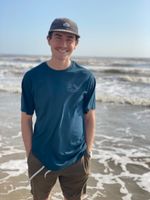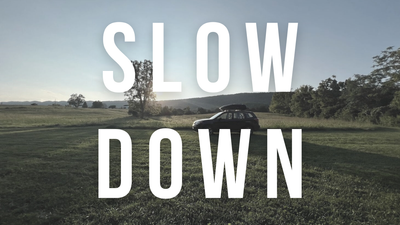How to Do the Impossible

Five of the six biggest waves ever surfed were surfed at Nazaré.
Nazaré is a small Portuguese coastal town where, first in 2011, an American surfer named Garrett McNamara, rode a 78-foot wave.
This set a new world record and changed the big wave surf world forever.
Since McNamara’s first 78-footer, six other surfers have surfed monster waves at Nazaré. Two of those surpassed McNamara’s, and now German surfer Sebastian Steudtner holds the Guinness World Record at 86 feet.
The waves were always in Nazaré, but it’s only over the last decade (and some change) that the small fishing village has become the big wave surf capital of the world. Any and all world-class big wave surfers have to try their hand at Nazaré. [1]
So, what happened?
The big wave surf world didn’t know Nazaré was surfable. There was a surf culture in the area, but any surfer who had seen the towering Nazaré waves thought it was just too big and too dangerous.
Finally, a surfer (Garett McNamara) showed up and thought: it’s possible.
Once McNamara took on Nazaré and set the world record, other big wave surfers of similar caliber thought: I can do that too.
Maybe we’re all familiar with this kind of story. It’s the same story as the first runner to run a sub-four-minute mile. Back in 1954, Roger Bannister did what couldn’t be done and ran a mile in three minutes and 59 seconds.
Since then, well over 1,600 athletes have done the same.
Bannister or McNamara showed others what was possible. It turned out that these feats hadn’t in fact been impossible at all, they just hadn’t been done yet. So, with their example, others took on and achieved similar or in some cases even greater feats.
To me though, it isn’t just the exceptional courage or curiosity of the first people to do what’s believed impossible. What’s also worth paying attention to, is the tide that follows. These ground-breakers make it possible for countless others to follow in their footsteps.
I think there’s an incredible energy that those initial discoveries resonate, allowing everyone to jump in on the newly possible.
What kind of impact can we make knowing the restorative possibilities of compost (made from our everyday food scraps)?
What impact can we make knowing the life saving possibility of shade-providing trees?
We can rebuild our soil health and store carbon in our own yards with compost.
We can provide refuge for ourselves and our communities, lowering the ground temperature 20-45 degrees with trees during heatwaves. Once we learn that these things are possible (and sometimes easily done) we can chip away at the problems we face that are “impossible” to solve.
What Can Be Done, Can Be Done
In my many conversations about Grow Ensemble over the years, I’ve gotten the most pushback not about aspirational visions for the future, but about the possibility of things we know are already possible.
Despite our enthusiasm to rally behind people that attempt the impossible in some of the most extreme scenarios despite seemingly insurmountable odds, things like neighborhood solar panel installations, habitat restoration, and business that guarantees no slave labor in their supply chain can be looked at with skepticism.
But like surfing Nazaré, these things are extremely possible. How do we know? Because it’s already being done!
It’s not just entire neighborhoods running off renewable energy, entire states are
Electric Vehicles aren’t just hypothetical anymore, they are soon to become part of the mainstream. [2]
So why do we resist jumping on the bandwagon for some of the more day-to-day possibilities that we might talk about here at Grow Ensemble? I think the answer isn’t that it hasn’t been done. It’s that we just haven’t seen it.
So what do we do?
Dealing in the Realm of the Possible
I’ve learned there’s a shared motivation behind the efforts of many making social or environmental action their lifes’ work.
To show others what’s possible, both for the first time and the hundredth
Because many of them consciously (or subconsciously) know that, like the examples we shared above (the McNamaras, the Bannisters, etc.), if they can show others what can be done, they know more will do it.
This fall, The Social Entrepreneurship & Innovation Podcast will feature a conversation I had with Gia Schneider, CEO of Natel Energy.
Her company, which she co-founded with her brother, is designing and implementing hydropower projects that both produce affordable, clean, and renewable energy and leave the river ecosystems they are set up in better off.
Here’s a sneak peek at a segment from the interview I thought was worth sharing:
“At the end of the day, whether it's policymakers or general discussion and interest, it's always grounded in what people think is possible.
Maybe electric vehicles are a good example of that.
If you were to rewind and talk to somebody 15 years ago, many people were of the view that it was a really far out likelihood that electric vehicles would be where we are today—that the path we're on, a path of phasing out internal combustion engines within, not just my lifetime, but within a portion of my lifetime [would be impossible].
And that's a huge shift in perception of what's possible. And I think in hydro we can show that with innovation, it is possible to actually make fish-safe turbines, to make it possible for hydropower facilities to take elements of river restoration and combine that so that we end up with projects that help to restore [and] maintain river function while also generating renewable energy. Those projects can help deal with these changing water patterns that we see particularly with the extreme precipitation events.
Raising the awareness of what's possible, then helps shift the general perception and interest, right?
Because people want to focus on things that are possible.”
—Gia Schneider, CEO of Natel Energy
— —
People want to focus on things that are possible.
I get it. Why even try if something seems clearly impossible to accomplish?
Most of us can’t or won’t ever get the chance (or the desire) to be the first to do the impossible.
I know in no universe will I ever be running a sub-four-minute mile or surfing a wave that’s bigger than 5 feet (on purpose).
But, if I know what’s possible for me, I know I can surely follow suit. And that’s energizing for me. Because I know, a movement, a change, a historic shift, doesn’t happen with one person doing the impossible.
Sure, that might be how it starts, but a movement (by definition), is a group of people working towards a common goal.
So we might never be the first.
But a lot of us are going to be the fourth, six-hundredth, or millionth person to do what that first person showed was possible.
Gia, her brother, and their company Natel Energy might not be the exact people who end up converting and scaling the 260-billion plus kilowatt hours of hydropower produced in the U.S. to be fish-friendly or better for our rivers.
But, others in their sector will see what they’ve done and know they can do it, too.
Those who are slow to adjust won’t be able to excuse outdated methods because of a lack of a more sustainable, restorative alternative.
And because of that, the Natel team has already changed everything.
It’s the rest of us that just need to know about it so we can accept that it is possible.
It’s what the book Regeneration: Ending the Climate Crisis in One Generation did for me. With the many incredible ways we can implement nature-based solutions to climate change, I came to believe that yes, we can end the climate crisis in my lifetime.
It’s what discovering Dean’s Beans Organic Coffee Company did for me. Founder Dean Cycon both had me believe that a sustainable, profitable coffee business can be run while not simply not exploiting people or the planet, but in fact, making those stakeholders better off.
It’s what discovering Anyeley Hallová and her real estate development firm, Adre, did for me. Anyeley showed me that development can be done in a way that’s equitable, sustainable, and good for the community.
It’s what discovering Eric Henry, with TS Designs did for me. I came to believe that a profitable, sustainable business could be run while manufacturing products in a completely transparent, ethical way. All while being 100% made in America.
It’s what discovering the work of Neal Spackman, in Saudi Arabia did for me. I came to believe that as Neal says, humans have the potential to be a keystone species. We can turn our many degraded, barren landscapes into thriving regenerative income-producing ecosystems.
These people, companies, and initiatives have helped show me what’s possible.
And the more I chase the curiosity, the more I believe incredible things can and will be done.
Sure, some things are in fact impossible.
But, in some instances, what’s limiting our collective ability to build a truly better world for all, is what we think we know is or isn’t possible (when maybe it already is).
As we face countless challenges and seemingly insurmountable crises, perhaps we choose to believe that something different, something better is possible.
Perhaps even, we choose to seek out the possible amid the calls for panic, a focus on problems vs. solutions, and the assumed certainties that something we want or need cannot or will not be done.
What can be done when we know what’s possible?
— —
Footnotes:
1. For a brief history of Nazaré and an introduction to how the international big wave surf fame is affecting the locals, watch this video from Vox, here.
2. New car sales in the U.S. that were EVs recently crossed 5%. This 5% number is what’s been identified as a tipping point in the adoption of any new technology. It’s “the point when early adopters are overtaken by mainstream demand,” as reported by Bloomberg.
— —
Subscribe to our newsletter.
Become a subscriber receive the latest updates in your inbox.



